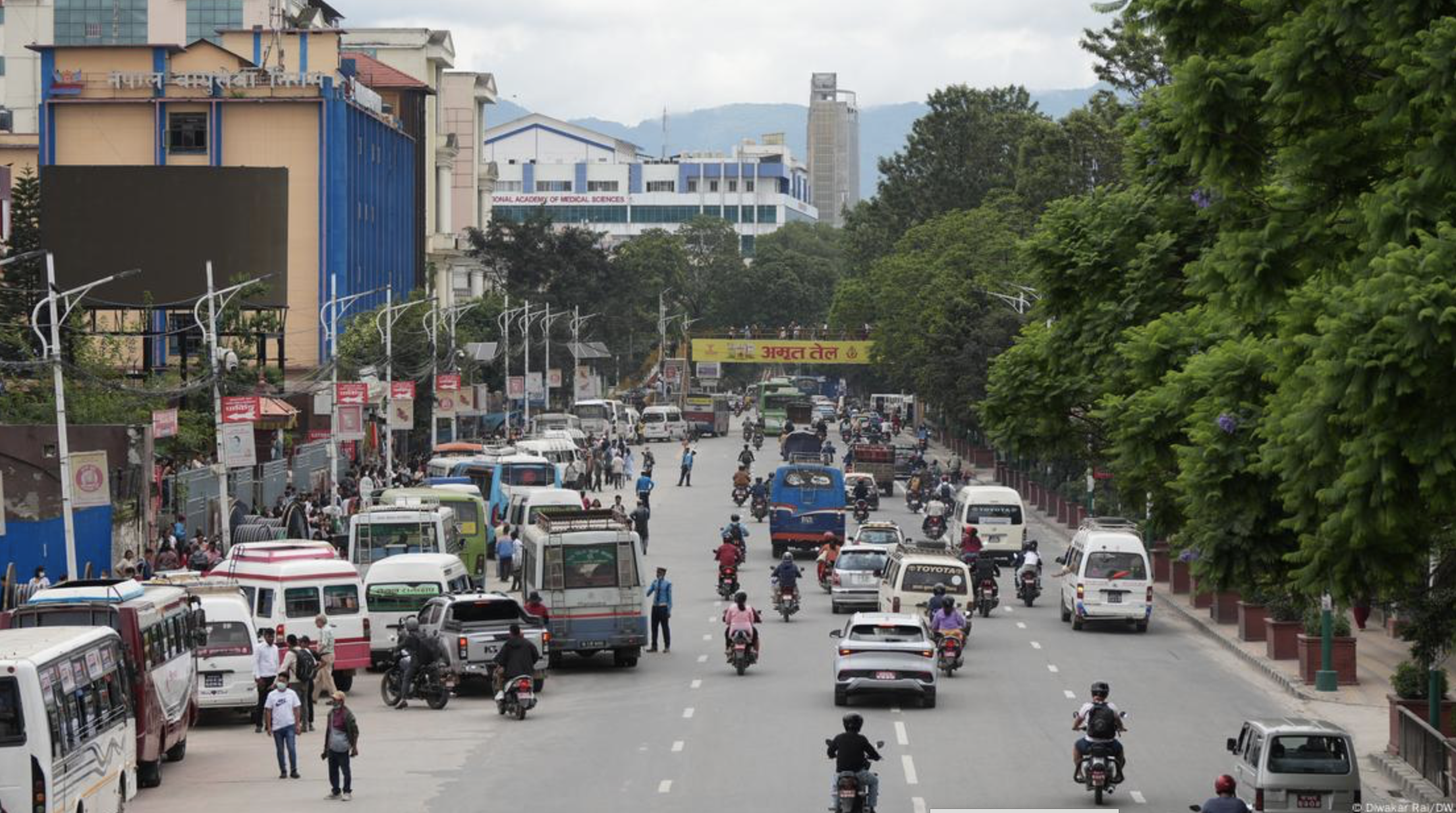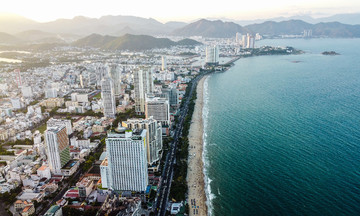In 2024, Sabin Kumar Chettri, a taxi driver in Kathmandu, sold his gasoline-powered car of nearly a decade to switch to an electric vehicle (EV). This decision came after years of facing expensive maintenance costs, high taxes, and ever-increasing fuel prices.
Chettri is one of the pioneers of the green transportation movement in Nepal. "Electric vehicle technology is getting better and better, and I wanted to experience it for myself early on," he said.
Every day, Chettri drives 130 km, earning 11,000 rupees (over 2 million Vietnamese dong). The cost of charging his vehicle is about 500 rupees (95,000 Vietnamese dong). Now, he no longer worries about finding charging stations, as there is one every 50-100 km. Electric vehicle companies also offer free maintenance for the first 160,000 km, resulting in significant savings.
 |
Sabin Kumar Chettri, a taxi driver in Kathmandu, Nepal, sold his gasoline-powered car of nearly a decade to switch to an electric vehicle. Photo: Diwakar Rai/DW |
Sabin Kumar Chettri, a taxi driver in Kathmandu, Nepal, sold his gasoline-powered car of nearly a decade to switch to an electric vehicle. Photo: Diwakar Rai/DW
Nepal is witnessing an electric vehicle boom. In 2020, there were only 250 EVs in the entire country. By 2024, this number surpassed 13,000. Electric vehicles account for 76% of total passenger car sales and half of light commercial vehicle sales. Five years ago, this figure was almost zero. Nepal's electric vehicle market share trails only Norway, Singapore, and Ethiopia, while the global average in 2024 was 20%.
This shift is part of a national strategy to reduce carbon emissions and transform urban transportation.
Suresh Shrestha, a senior engineer at the Nepal Ministry of Physical Infrastructure and Transport (MoPIT), said consumer demand for electric vehicles has increased significantly, mainly due to lower taxes compared to internal combustion engine vehicles.
The Nepalese government has set an ambitious transition program: By 2030, 90% of private vehicles and 60% of four-wheeled public vehicles sold must be electric. "To achieve this goal, the government is reducing tariffs, investing in the electric vehicle ecosystem by improving infrastructure, and maximizing the abundant hydropower resources," Shrestha emphasized.
Escaping the shadow of pollution
Kathmandu is regularly listed among the most polluted cities in the world. PM2.5 levels are 20 to 35 times higher than WHO recommendations. Emissions from 1.75 million vehicles, forest fires, brick kiln smoke, construction dust, and open burning of waste create a toxic haze, threatening public health. According to the World Bank, air pollution causes approximately 26,000 deaths annually in Nepal.
Electric vehicles have become a savior. Suman Maharjan, an electric vehicle dealer in Kathmandu, shared, "Electric vehicles are pollution-free and noiseless. Customers are increasingly concerned about the environment and want to save on fuel and maintenance costs." In six months, his dealership sold 125 vehicles and received deposits for another 250.
 |
A Kathmandu resident charges an electric vehicle, 7/2025. Photo: Diwakar Rai/DW |
A Kathmandu resident charges an electric vehicle, 7/2025. Photo: Diwakar Rai/DW
However, Nepal is still relatively new to electric vehicle technology and almost entirely dependent on imports from China and India. The government is working closely with international partners to maintain momentum. "There are still challenges regarding import standards and a shortage of skilled technicians," Shrestha admitted.
The World Bank is studying the feasibility of converting internal combustion engine vehicles to electric vehicles. International partners such as the Mitigation Action Facility, the Deutsche Gesellschaft für Internationale Zusammenarbeit (GIZ), and the Global Green Growth Institute (GGGI) are also helping Nepal train technicians and expand access to electric vehicle loans.
Shrestha believes that harnessing the country's vast hydropower resources can provide the clean energy needed to promote large-scale electric vehicle use.
"Nepal is ahead of the curve in adopting electric vehicles and proactively cutting carbon emissions. With abundant clean hydropower, Nepal is perfectly positioned to lead the shift to sustainable transportation," he concluded.
 |
More and more electric cars are appearing on Nepal's streets. Photo: Diwakar Rai/DW |
More and more electric cars are appearing on Nepal's streets. Photo: Diwakar Rai/DW
Hydropower and tax incentives: Strategic levers
Many countries are trying to electrify their vehicle fleets, but the rationale in Nepal is even clearer with the energy generated from the rivers flowing from the Himalayas. The Nepalese government has invested heavily in hydropower and grid infrastructure, providing cheap and clean electricity.
However, electric vehicles are still too expensive for widespread adoption in a country with a per capita GDP of around 1,400 USD. Therefore, the government has used every incentive lever.
In 2021, the government set customs duties and excise taxes on electric vehicles at a maximum of 40%, compared to 180% for gasoline-powered vehicles. As a result, the electric version of a Hyundai SUV model costs less than 38,000 USD, while the gasoline version is around 40,000 USD.
The Nepal Electricity Authority has built 62 charging stations, allowing people to freely build their own, imposing almost zero tax on equipment imports, and donating transformers – the most expensive component. The government prices electricity for charging stations lower than the market rate, making fueling costs 15 times higher than charging.
This has created a business model for hotels, restaurants, and roadside businesses to install their own charging stations. Currently, businesses have installed about 1,200 chargers, and thousands more may have been installed in private homes.
Minh Phuong (DW, NyTimes)












